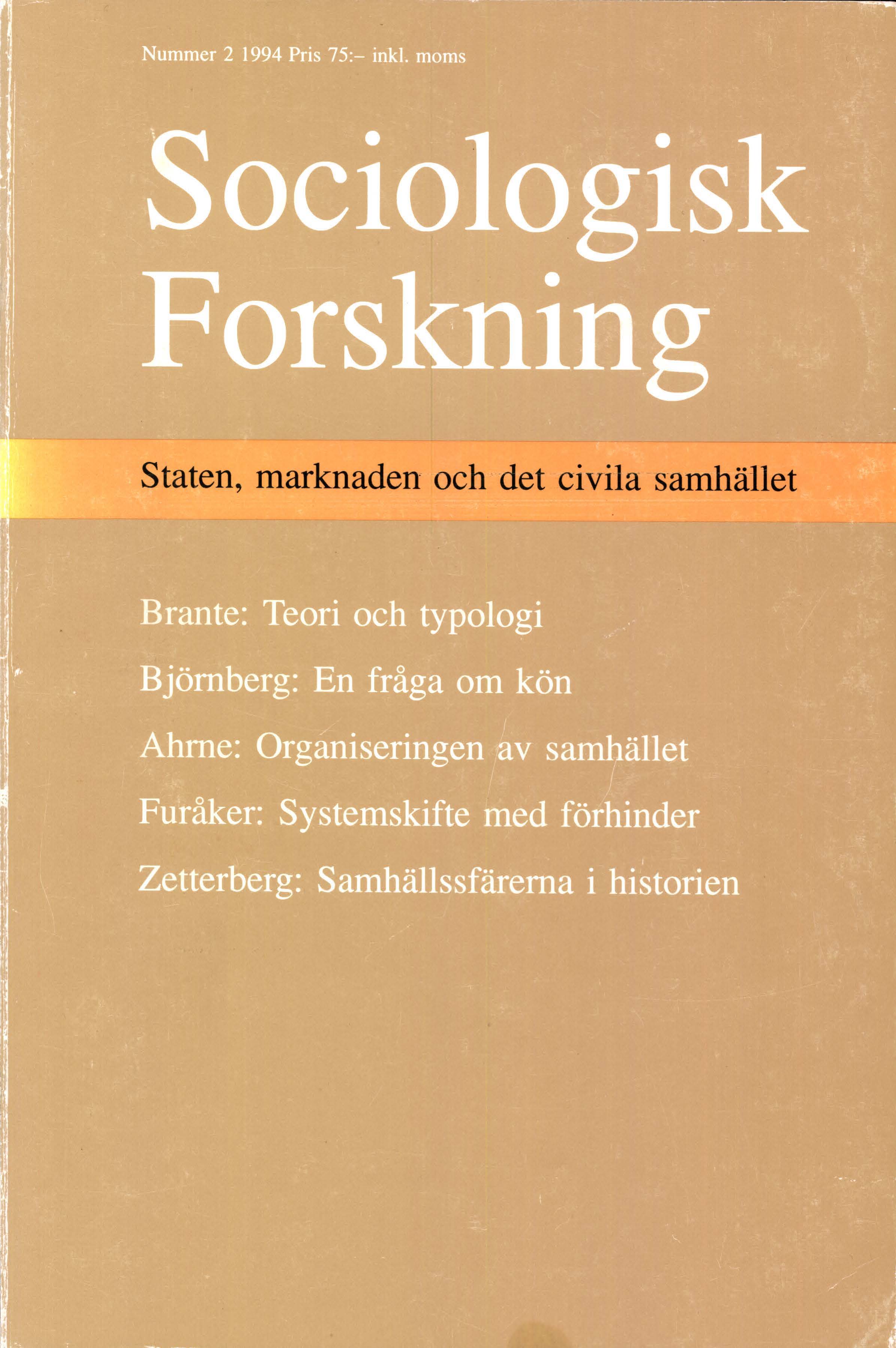Samhällssfärerna i historiens ljus
DOI:
https://doi.org/10.37062/sf.31.18613Abstract
Societal spheres in the light of history
A division of society into statecraft, economy, and civil society is found in Plato’s Republic. Its theoretical base is the differentiated and sometimes contradictory norms for these spheres. The mainstream of European structuration is traced from the ’two swords’ - state and church - that structured western European society in the Middle Ages to the six societal spheres (or cardinal institutions) of society - the economy, government, science, religion, ethics, and art - that are visible today. Each maintain a large measure of independence (Weber’s Eigengesetzlichkeit). Each is dependent on a special type of freedom: civic liberties, free trade, academic freedom, religious toleration, the right to follow one’s conscience, artistic license. The paper pauses in this differentiation process at special junctures: the English revolution, the emergence of the Latin American and North American societies, the evolution of modem society as an underpinning of democracy, the emergence of the European Union, and the post-Communist Central and Eastern Europe.
Downloads
Publicerad
Referera så här
Nummer
Sektion
Licens
Allt material i Sociologisk Forskning publiceras med omedelbar öppen tillgång (open access), under Creative Commons-licensen CC BY-NC-ND 4.0.
Allt innehåll i tidskriften är fritt tillgängligt utan kostnad och får för icke-kommersiella syften fritt läsas, laddas ned, kopieras, delas, skrivas ut och länkas. Innehållet får dock inte ändras. När innehållet används måste författare och källa anges. Upphovsrätten till innehållet tillhör respektive författare. Inga publiceringsavgifter tas ut.





